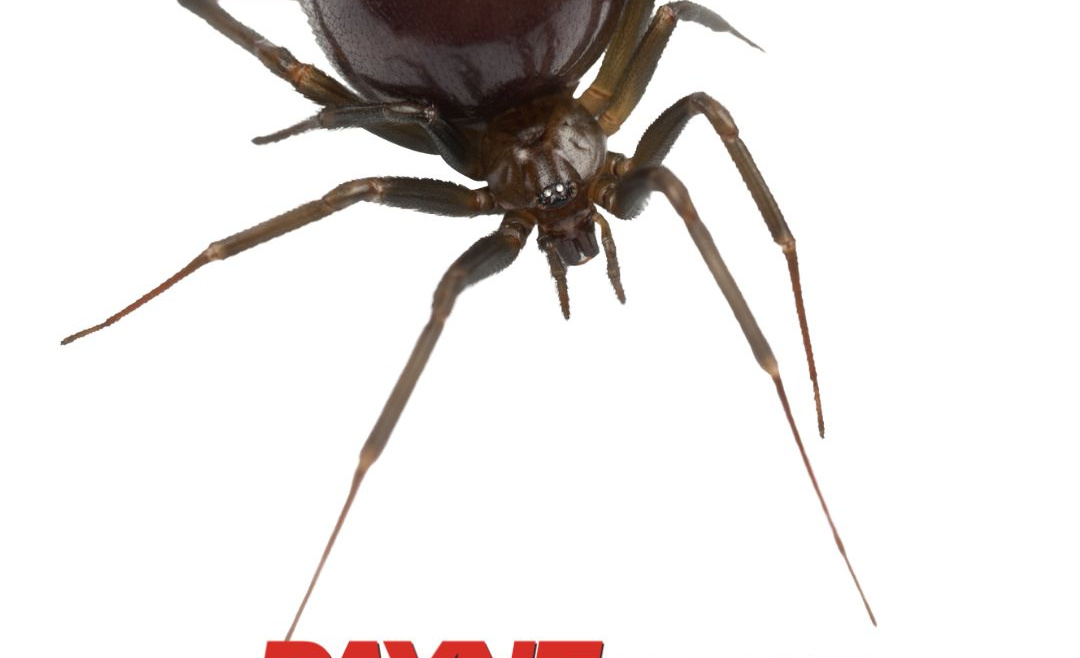Palm Springs, a vibrant desert oasis in California, is known for its sunny weather, stunning landscapes, and diverse wildlife. While many creatures call this region home, spiders play a crucial role in the local ecosystem. To fully appreciate and coexist with these fascinating arachnids, it’s essential to understand the spiders in Palm Springs to be on the lookout for. In this comprehensive guide, we’ll explore the most notable spider species in the area, their unique characteristics, habitats, and ways to ensure a safe and spider-friendly environment.
Let’s delve deeper into each of these spiders, understanding their unique characteristics, preferred habitats, and potential encounters with humans.
1. Black Widow Spider – The Venomous Arachnid Beauty
With its iconic jet-black body and red hourglass-shaped marking, the Black Widow Spider is perhaps the most notorious spider species in Palm Springs. This venomous arachnid is known for its potent neurotoxin and the female’s tendency to devour the male after mating. While encounters with Black Widow Spiders are relatively rare, it’s crucial to exercise caution when exploring dark, undisturbed areas.
Habitat: Black Widow Spiders favor dark, secluded locations such as woodpiles, cluttered garages, and outdoor sheds.
Safety Tips:
- Wear gloves when handling firewood or reaching into dark corners.
- Shake out shoes and clothing before wearing them, especially if they’ve been left outside or stored for some time.
- Keep outdoor storage areas well organized and clutter-free.
2. Desert Tarantula – The Furry Gentle Giant
Contrary to popular belief, Desert Tarantulas are generally docile creatures that pose little threat to humans. These large, hairy spiders are known for their impressive size and impressive burrowing skills. If you happen to encounter a Desert Tarantula, consider it a rare and exciting wildlife sighting.
Habitat: Desert Tarantulas create burrows in dry, sandy areas, often hidden beneath rocks or vegetation.
Safety Tips:
- Admire Desert Tarantulas from a safe distance and avoid handling them.
- If you come across a burrow, respect the spider’s space and observe from afar.
3. Orb-Weaver Spiders – The Master Web Architects
Orb-weaver spiders are renowned for their intricate, circular webs that they construct to capture prey. These industrious spiders are often found in gardens, parks, and wooded areas throughout Palm Springs. While their presence may startle some, orb-weaver spiders are generally harmless to humans and should be appreciated for their pest control abilities.
Habitat: Orb-weaver spiders prefer areas with abundant insect activity, such as gardens, meadows, and forests.
Safety Tips:
- Admire the intricate beauty of their webs but avoid touching or disturbing them.
- Be cautious when walking through areas with visible webs to avoid accidentally walking into them.
4. Jumping Spiders – Acrobats of the Spider World
Jumping spiders are small but mighty predators known for their incredible leaping abilities. These agile arachnids have excellent vision and are often seen jumping from leaf to leaf or pouncing on unsuspecting prey. While their appearance may startle some, jumping spiders are harmless to humans and contribute to natural pest control.
Habitat: Jumping spiders can be found in a wide range of environments, including gardens, forests, and even inside homes.
Safety Tips:
- If you encounter a jumping spider indoors, gently guide it outside using a glass and piece of paper.
- Appreciate their acrobatic displays from a safe distance.
5. Wolf Spiders – Stealthy Hunters of the Night
Wolf spiders are skilled hunters that rely on their exceptional eyesight and speed to catch their prey. These solitary spiders are known for their unique maternal instincts, as females carry their egg sacs attached to their spinnerets until the spiderlings hatch. While encounters with wolf spiders are possible, they are generally harmless and prefer to avoid human contact.
Habitat: Wolf spiders can be found in a variety of habitats, including gardens, grassy areas, and under stones or logs.
Safety Tips:
- If you come across a wolf spider, observe it from a safe distance and avoid touching it.
- Keep outdoor areas well-maintained and minimize clutter to reduce potential encounters.
6. Sac Spiders – The Elusive House Dwellers
Sac spiders are a diverse group of spiders known for their elongated bodies and sac-like webs. While some species of sac spiders are capable of biting humans, they generally only do so when provoked or threatened. Sac spiders are more commonly found indoors, where they seek shelter and prey on other insects.
Habitat: Sac spiders can be found in various indoor environments, such as homes, garages, and sheds.
Safety Tips:
- If you suspect a sac spider infestation indoors, consider contacting a professional pest control service.
- Seal cracks and crevices in your home to prevent spider entry.
7. Crab Spiders – The Masters of Disguise
Crab spiders are named for their sideways walking posture and their ability to change color to match their surroundings. These ambush predators patiently wait for unsuspecting prey to wander within striking distance. While crab spiders can deliver a bite if provoked, they are generally non-aggressive toward humans.
Habitat: Crab spiders can be found in flowers, plants, and foliage where they blend in with their surroundings.
Safety Tips:
- Avoid touching or handling crab spiders.
- Be cautious when reaching into vegetation, especially if you notice spider-like movements.
8. Funnel Web Spiders – Engineers of Underground Abodes
Funnel web spiders are skilled architects that construct distinctive funnel-shaped webs leading to their burrows. These spiders are more commonly found in sandy or loamy soil areas where they can dig their underground retreats. While some species of funnel web spiders possess venom that can cause discomfort, they rarely bite humans unless provoked.
Habitat: Funnel web spiders prefer habitats with loose soil, such as gardens, sand dunes, and forested areas.
Safety Tips:
- Avoid reaching into crevices or holes in the ground where funnel web spiders may reside.
- If you encounter a funnel web spider, give it space and avoid disturbing its web.
9. Nursery Web Spiders – Diligent Parents and Swift Predators
Nursery web spiders are known for their unique parental care behaviors. The females carry their egg sacs with them and construct a nursery web to protect their developing spiderlings. These spiders are excellent hunters and rely on their speed and agility to catch their prey. While nursery web spiders can bite if provoked, they are not considered dangerous to humans.
Habitat: Nursery web spiders can be found in various habitats, including grasslands, forests, and near bodies of water.
Safety Tips:
- Avoid handling nursery web spiders or disturbing their egg sacs.
- Teach children to appreciate these spiders from a safe distance.
10. Cellar Spiders – The Delicate Web Weavers
Cellar spiders, also known as daddy longlegs or granddaddy longlegs, are common house spiders recognized for their long, delicate legs and messy webs. Despite their appearance, cellar spiders are harmless to humans and are considered beneficial because they prey on other household pests like mosquitoes and flies.
Habitat: Cellar spiders are often found in damp, dark areas such as basements, crawlspaces, and garages.
Safety Tips:
- Allow cellar spiders to coexist in your home, as they help control other pest populations.
- If their webs become bothersome, gently relocate them using a glass and piece of paper.







